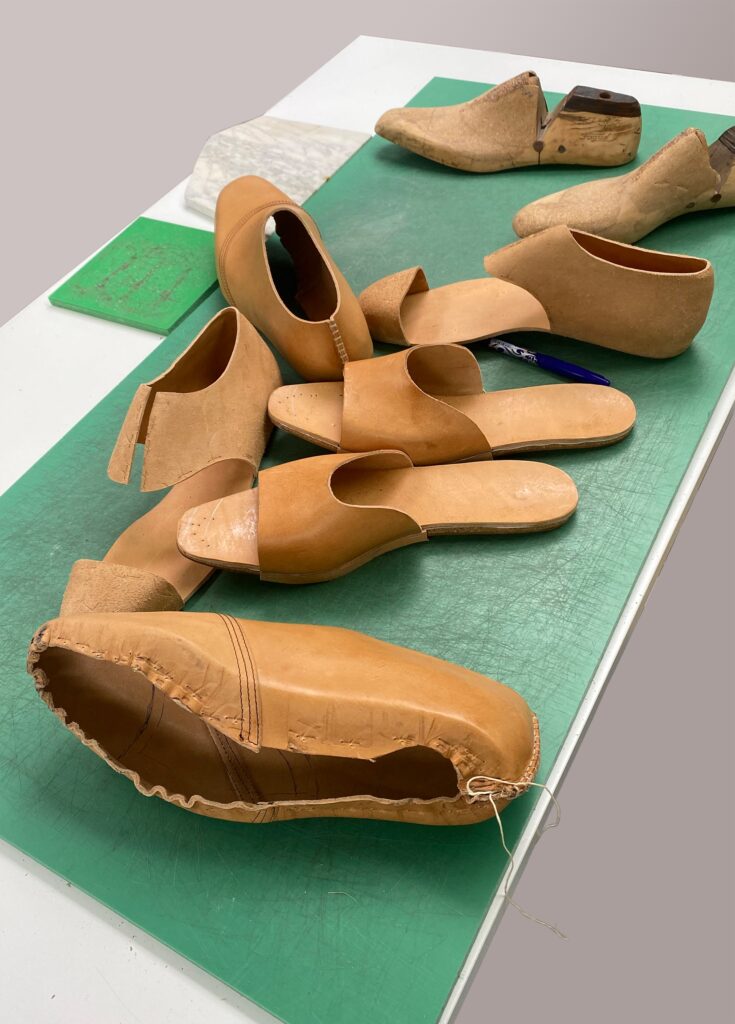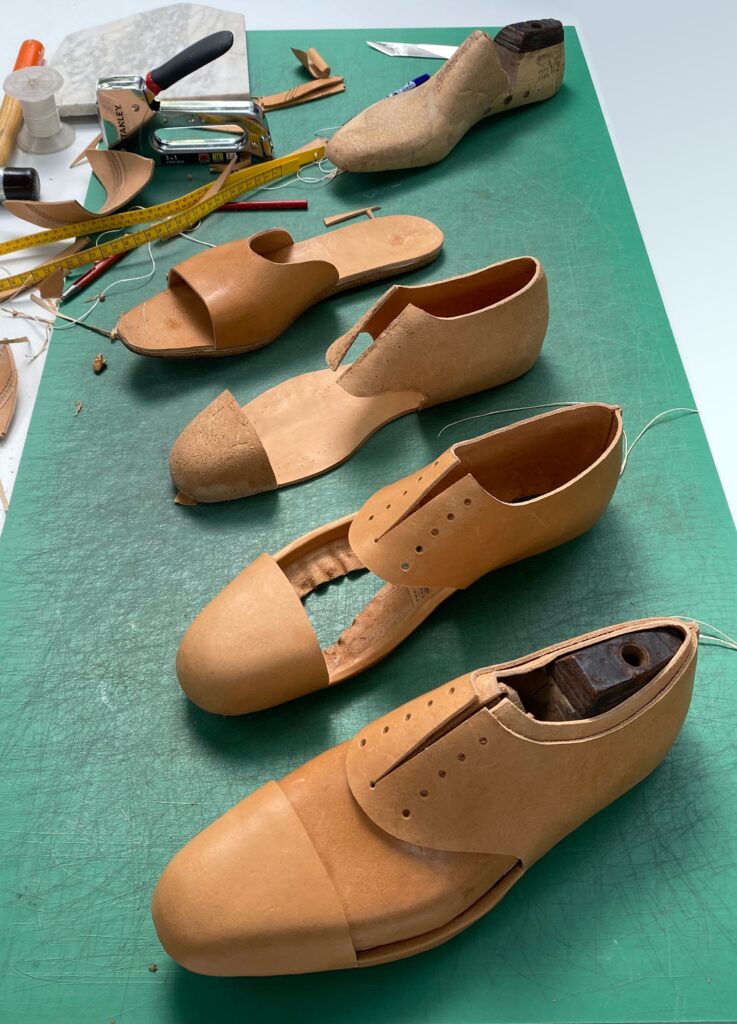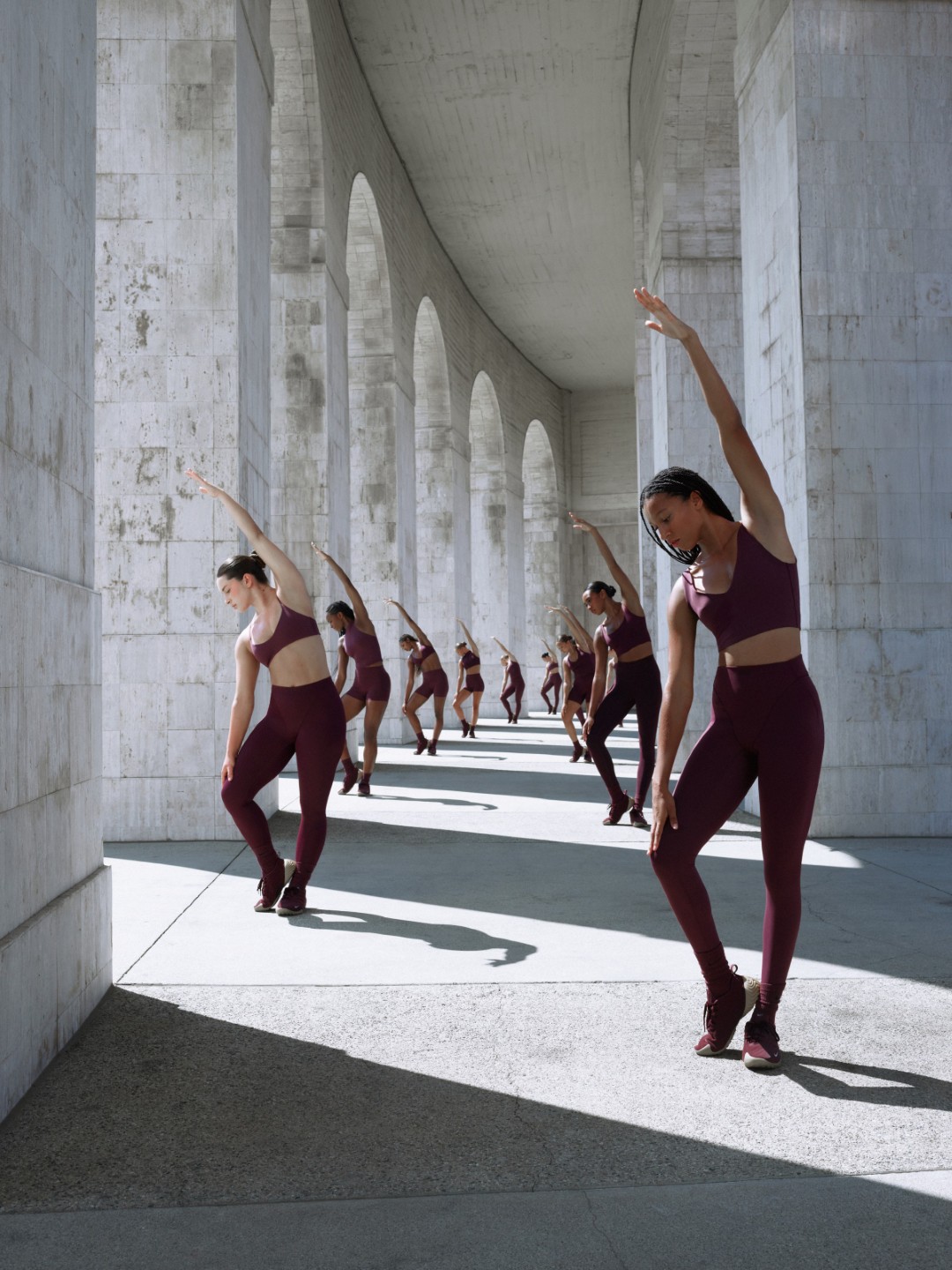At the Global Footwear Awards (GFA) 2023, sustainability took center stage, as designers from around the world showcased their commitment to eco-conscious practices. Among them, Wout Speyers emerged as the Overall Winner in Sustainability, capturing hearts with his innovative approach to design that blends elegance with environmental responsibility.
Wout Speyers, born in 1968 in Nijmegen, the Netherlands, is a talented designer with a passion for creating beautiful and functional pieces. He studied Architecture and Industrial Design Engineering at the University of Technology in Delft, where he developed skills that would shape his career. His graduation project in 1996, designing a museum for historic posters at the Spuiplein subway station in The Hague, showcased his talent and set him on a path of innovation.
During his time at Neonis Industrial Design, Wout discovered his love for furniture while working on the Personal Furniture System. His journey took him to the USA, where he specialized in case goods and cabinetry as the Director of Product Development for Goelst USA Inc. in Winston-Salem, NC. His notable achievement includes designing the mailsorting desk for the IRS, still used by thousands of federal employees in the USA.
Upon returning to the Netherlands, Wout joined the product development department of Pastoe, a renowned company specializing in cabinetry. Here, he worked on projects like the realization of Maarten van Severen chairs and the redesign of the low-board Frame.
Since 2008, Wout has been successfully designing tables, chairs, and sofas from his studio. In 2019, he fulfilled a long-cherished dream by enrolling in Artisanal Shoemaking at the René van den Berg Academy. His dedication paid off as he embarked on commissions for both ladies’ and men’s shoes, further expanding his creative horizons.
Join us as we discover the story behind Wout’s remarkable journey, exploring the intersection of artistry, sustainability, and innovation. Through his inspiring work, Wout Speyers reminds us that the future of design lies not just in aesthetics, but in our collective ability to create a more sustainable world for generations to come.

Could you tell us a bit about yourself and your professional journey?
I am originally an industrial designer engineer and somewhere in life I fell in love with chairs. Designing chairs was my main focus for quite a while and then it struck me that a chair and a shoe are the same thing. It therefore made sense to switch to shoes and five years ago I started an education in artisanal shoemaking at the René van den Berg Academy.
Both, a chair and a shoe, are free-standing objects defined by the line, sculptural pieces so to speak. Both are intensively used and have complex curved surfaces due to their relationship to the human body. Upholstery, leather, folds, and stitches play a part and new techniques and new materials are quickly integrated with both products.
However, a shoe is more dynamic than a chair and finds its way through the world. It is such a pleasure to be involved with expression and fashion while artisanal shoemaking is still a very technical profession that fits in with my engineering background. The step aside to art is a small one. Ultimately I just make sculptures, if possible practical sculptures.
Can you explain your general design process? How do you start a new project?
A ‘general design process’ suggests that there is a standard approach and maybe that was taught to me at the university a long ago. Something about sketches, variants, and semi-scientific choices but I kind of forgot about that.
Nowadays ideas often come from an object or thing I see at a flea market or in a museum. Sometimes it is a fragment from a song or a line of text from a novel. Perhaps even the dissatisfaction of the evening news. The core is inspiration, a sparkle of life that connects it to the real world.
For example, the Global Footwear Award winner ‘ One shoe fits all’ is made of vegetable-tanned leather which is a responsible choice. To emphasize that we must use precious materials efficiently, I have put two functions in one product. But there is also the observation of modern life. Neatly dressed Oxfords-wearing men run a rat race every day, but there is always a pause. There is a built-in reminder that being less hurried is also an option. Just pull out the slipper and let it all go, the opportunity to take it easy. Hakuna Matata.
It should not be left unmentioned that this shoe was only possible with the support of my mentor René van den Berg.
Is there a philosophy, a vision, or a special process that influences your design?
The year is 2024 and the world is entirely driven by efficiency and the maximization of profit. Well not entirely. A small local shoemaker still holds out against this spreadsheet mentality.
I’m exaggerating a bit, but it still amazes me that professionals send invoices made up of 5-minute time intervals. I resist that and there is no clock in my studio. If there’s one thing I’m aware of – let’s call it vision – it’s being generous with time. Beauty cannot be forced and value creation takes time. Ideas mature slowly, I have plenty of time for my clients and I put everything together in a relaxed manner. That sounds laid back but still, you have to do everything with focus, intensity, and dedication. I cherish commitment and ultimately love for the product.
What did you find the most challenging while working on a new footwear concept?
I often work on many projects at the same time; art projects, (shoe) sculptures, and bespoke shoes for customers. That sounds interesting, but it is not very good for progress. I tend to think more than I actually create and sometimes there is a discrepancy between the ideas and the craft I master.
The answer to all those things is the same: discipline. Keep creating, keep practicing. It is the 2024 New Year’s resolution, like every year.


What does winning the Global Footwear Awards mean to you?
As I mentioned before, I have made a switch from furniture design to footwear and I am relatively new to shoe design. Winning the Global Footwear Awards was a huge boost and confirmation that I am on the right path. Besides that, it is a much-appreciated sign of quality for my customers.
I am very grateful to have won this award. Thanks so much for the opportunity!
What is your sustainable design approach when developing your pieces?
Making bespoke custom shoes is a responsible choice because the valuable leather is used for shoes that are worn (and not for a series of fitting shoes in shops). Well-fitting shoes simply last longer. Since my training in Tuscany, Italy (and winning ‘Craft the Leather’) I have been using more and more vegetable-tanned leather.
I like to think that a local shoemaker is a sustainable choice because the money stays within the community. The ‘buy local’ principle without mass production and major transportation around the globe.
The ‘Makerszoon’ concept created by master shoemaker René van den Berg is a wonderful example of all this. Makerszoon shoes are only made when there is a customer. All vegetable-tanned leather is therefore used effectively. Rene does not use electricity to make this shoe and the imperfections of handmade are part of the design. All stitches are on the outside making the shoe easy to repair. Wherever you are, there will always be someone close by with a needle and thread. To prevent customers from having to drive across the country for a pair of Makerszoon shoes, these shoes are made locally by a craftsman in his studio. That would be me for the province of Utrecht, the Netherlands and I like to involve customers in the entire process of creation. I do use electricity sometimes, don’t tell anyone.
What advice would you offer to aspiring designers?
Be patient and practice. Sooner or later you’ll find your own voice.
(There’s not much wrong with copying the masters to get a sense of greatness).










